Category / Impact
RCUK launches impact reports
 Yesterday, the RCUK launched reports detailing the impacts of a collective investment of £3.4Bn in 2015/16. These impact reports showcase specific examples of the impact of investment through their various awards, programmes and collaborations. The wide-ranging nature of the impact extends from furthering technological advances to combatting disease to breakthroughs in the creative economy. Click here for an overview.
Yesterday, the RCUK launched reports detailing the impacts of a collective investment of £3.4Bn in 2015/16. These impact reports showcase specific examples of the impact of investment through their various awards, programmes and collaborations. The wide-ranging nature of the impact extends from furthering technological advances to combatting disease to breakthroughs in the creative economy. Click here for an overview.
Links to Impact Reports are available below:
- Arts & Humanities Research Council (AHRC)
- Biotechnology & Biological Sciences Research Council (BBSRC)
- Economic & Social Research Council (ESRC)
- Engineering & Physical Sciences Research Council (EPSRC)
- Medical Research Council (MRC)
- Natural Environment Research Council (NERC)
- Science & Technology Facilities Council (STFC)
Impact – in numbers
- Growth, productivity and job creation
- 93% of Research Council funded PhD graduates are employed 6 months after graduation
- 17,435 current doctoral students
- 57 spin out companies and 182 instances of IP in 2015
- 30% of academics interact with private business
- £229M additional funding leveraged from external partners
- 17% rate of return on public investment in medical research (See MRC impact report)
- 3202 instances of new collaborations reported in researchfish® in 2015/16 across all Research Councils
- More than 50% of PhD graduates work outside academia 7-9 years after graduation – CFE Research (2014)
Global impacts
- 5231 partners in 88 countries
- UK ranks first for citation impact – Elsevier (2013): International Comparative Performance of the UK Research Base – 2013.
- UK ranks 3rd in Global Innovation Index
- The Research Councils play a pivotal role in addressing all 17 of the UN’s Sustainable Development Goals
The Compound Eye of Calliphora Vomitoria (Bluebottle fly)

“Blood feeding activity of flies at crime scenes can be confounding. Experiments were conducted to investigate the blood feeding activity, and blood artefact patterns created by flies following a blood meal. The trials were undertaken in a staged environment where over 500 flies were exposed to 500ml of horse blood in a sealed gazebo for a period of 72 hours. The resulting patterns, a total of 539,507 fly blood artefacts, were then compared to recreated bloodstain patterns commonly encountered during instances of violent assault. These comparisons focused on overall pattern shape, total stain numbers, stain density per cm2 and the zone where they were deposited. Informal observations and recordings were also made of individual stain colour and stain alignment, but were not measured.”
This was the abstract submitted to accompany Christopher’s recent submission to the Research Photography Competition, where he won second prize.
Research Drove Me to Murder

“As reported by National Policing Improving Agency, the most frequently encountered evidence at the scenes of a crime is footwear impressions and marks. Unfortunately, recovery and usage of this kind of evidence has not achieved its full potential. Due to the cost benefit ratio (time consuming casting procedures, expensive scanners) footprints are often neglected evidence. As technology changes, the capabilities of forensic science should continue to evolve. By translating academic research and technical ‘know-how’ into software (www.digtrace.co.uk) the authors have placed 3D imaging of footwear evidence in the hands of every police force in the UK and overseas.”
This was the abstract submitted to accompany Dominika’s recent submission to the Research Photography Competition.
Sherlock’s Window: In search of an odourless growth medium
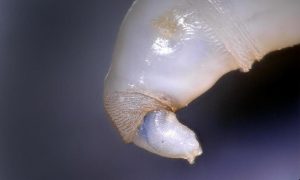
“A key aspect of forensic investigation is the assessment of the ‘window of opportunity’ during which death took place. Estimations using insects (e.g. blowflies) increase accuracy. Using blowflies to determine post-mortem period requires an understanding of the temperature dependent growth patterns that they develop through their life cycle. In order to understand this, blowfly larvae are reared on growth media in the laboratory.
Sherlock’s Window is a HEIF-funded project at BU which aims to produce an odourless growth medium that can be rolled out internationally for use in forensic investigation. Illustrated here is the head of a third instar blowfly larva. Maggots have no eyes, but the protrusions at the tip of the mouth area are palps, used for feeling and manipulating food particles. The rows of black barbs that are visible are used to pull the maggot forward through the food substrate.”
This was the abstract submitted to accompany Dr Andrew Whittington’s recent submission to the Research Photography Competition.
Find out more about the project in the latest edition of the Bournemouth Research Chronicle featured in the section: “Innovation in industry:how researchers and the wider community are working together.”
Follow HEIF on Instagram to find out more about the innovation projects taking place at BU: https://www.instagram.com/heif_at_bu/
BU alumni working on serious gaming project
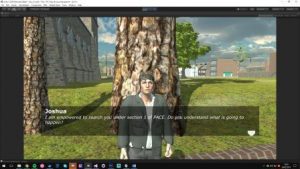
Joshua (Josh) Cook graduated in 2016 with a first in BSc Games Programming. He is currently working on an innovation project being led by Professor Wen Tang. ” PLUS” is a gamified training application funded by HEIF, in collaboration with the Dorset, Devon and Cornwall (Strategic Alliance) Police forces in order to provide a virtual learning environment that teaches trainees in a more engaging manner than traditional paper based learning.
As a project team member Wen commented “Josh has been a pro-active and key member of the project team working with both academics , the College of Policing and police forces around the UK to develop this training application.”
Key areas of focus for Josh have included:
- Making the system more generic, so that the project can later be expanded to multiple areas and more situations with ease
- Improve the visual environment (of the game) with shaders and animations
- Include data analytics in order to obtain an understanding as to how trainees are using the game, how long they take, how many mistakes they make etc
Josh didn’t take a placement year during University, so aside from a summer position in a local games position he did not have much work experience. On being given this opportuntity to work on the projetc Josh commented ” The PLUS project seemed like an interesting project to work on, and when I found out a position was open to work on it I applied. I’ve learned some useful things on this project, such as working from and improving upon an existing code base, what it’s like working directly with clients, implementing and using data analytics, and I’m sure I’ll learn more throughout the duration of my employment.”
This project has received funding from August 2015 with the funding ending in July 2017. (HEIF 5+1 and HEIF 5+1+1)
Read more about this project in full: Serious Games for Police Training.
BU alumni supporting innovation projects at BU

Dominika Budka is currently working on an innovation funded (HEIF) project called: “Dinosaurs to Forensic Science: Digital, Tracks and Traces”. She graduated last year (2016) having completed an MSc Forensic and Neuropsychological Perspectives in Face-Processing
Forensic technology and tools are advancing across the board, with the analysis of digital trace evidence being an exception. The techniques and tools used to capture and analyse footwear evidence have not changed in over a hundred years. This project is already changing the status quo by translating academic research on human and dinosaur tracks into tools for forensic practitioners to use. The product that has been developed, DigTrace, is an integrated software solution for the capture and analysis of 3D data whether in a forensic context (footwear evidence) or in the study of vertebrate tracks and footprints. One of the recent successes is the exhibit the project team are organising at the very prestigious Royal Society Summer Science Exhibition, to be held in London in July.
The project team were looking for a dissemination officer to help spread the word about the software and engage user groups both within the UK and overseas. Dominika’s role involves working with external stakeholder groups, organising dissemination events, developing training materials and events for academics, crime agencies, forensic specialists, and UK police forces.
About working on the project, Dominika comented, “I’m thrilled to be able to contribute to the project, which is not only well-aligned with my interests, but has also a huge potential for impact in terms of improving societal security. I’m working with a unique product set which can enhance global security by improving forensic practice, as well as criminal intelligence gathering and ultimately prosecution. The forensic context of the project is what I find most interesting as it links directly to my MSc”
To find out more about the project – click on the link: Dinosaurs to Forensic Science: Digital, Tracks and Traces
Tracks in the sand: tracking criminals
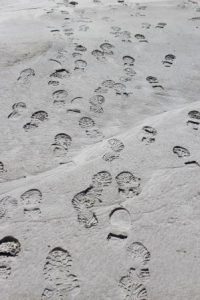
“Within our lives we leave thousands of individual footprints – in the snow, on the beach, in the park and sometimes even muddy prints on the kitchen floor! Tracks are more numerous than any other form of trace evidence, and record a unique snap shot in time about the track-maker. Not only do they record details of the shoes worn, but information about our body mass, style of walking and the specific wear on the soles of our shoes that record information about the history of our footfall. Reading these clues digitally provides an important forensic tools and HEIF-funded BU research (www.DigTrace.co.uk) in this area is shaping forensic practice both in the UK and overseas. “
This was the abstract submitted to accompany Professor Matthew Bennett’s recent submission to the Research Photography Competition.
This is the first image to go live on the new Instagram account for HEIF. What not follow to find out more obout the exciting innovations projects past and present at BU.
It can be found here: https://www.instagram.com/heif_at_bu/
Innovation funding now featured on Instagram !

Forming part of a media package to support innovation funding at BU, a new Instagram Account is now live. Oliver Cooke a third year student on the BA Honours Media Production course is developing a number of different media channels to showcase the range of Higher Education Innovation Funded (HEIF) projects at BU.
It can be found here: https://www.instagram.com/heif_at_bu/
This first image to go live comes from Matthew Bennett’s submission to the Research Photography Competition. (Read more about the HEIF project Matthew is leading on here: Dinosaurs to Forensic Science: Digital, Tracks and Traces
(Research Photography Competition now in its third year.)
Ollie is also working on a short video documentary and website as part of this project.
Ollie’s experience with HEIF came from the time on his work placement last year. He worked within the Research and Knowledge Exchange Office (RKEO) as the Student Engagement Co-Ordinator and had the chance to be involved in a number of initiatives including HEIF. Whilst reflecting on his time in RKEO and ideas for his Graduate Project, it was clear that there are many interesting projects at BU.
Commenting on his chosen topic Ollie comented “It also struck me that here was an ideal opportunity to create some really engaging media content in order to showcase the innovation journeys and provide more information about innovation and knowledge exchange at BU. This will aim to highlight the people involved with HEIF at BU, as well as the research.”
Ollie has just started filming and the first footage has been shot involving Andrew Whittington (PI) and BU student Christopher Dwen who are working on the project: “Sherlock’s Window: improving accuracy of entomological forensics at post-mortem criminal investigation using combined cuticular hydrocarbon and internal metabolite analysis.”
(Sherlock’s Window was also featured in the latest edition of the Bournemouth Research Chronicle: Edition 6, January 2017, Page 22.)
ESRC Festival of Social Science 2017
 The call for participants for the 2017 ESRC Festival of Social Sciences will be opening on 29th March. The festival this year is taking place from the 4th to the 11th of November with events taking place across the BU Campus and in the local area. We will be looking for applications from social sciences researchers to run workshops/exhibitions/lectures/activities (we’re open to ideas) open for attendance for the wider public.
The call for participants for the 2017 ESRC Festival of Social Sciences will be opening on 29th March. The festival this year is taking place from the 4th to the 11th of November with events taking place across the BU Campus and in the local area. We will be looking for applications from social sciences researchers to run workshops/exhibitions/lectures/activities (we’re open to ideas) open for attendance for the wider public.
The ESRC FSS encourages to support and create the opportunity for social science researchers to engage with non-academic audiences and to promote and increase awareness of the social sciences and the contribution they make to the wellbeing and the economy of society.
Please keep an eye out for further information when the call for applicants opens on the 29th March or contact Genna West (gwest@bournemouth.ac.uk) to find out more.
Glastonbury Festival 2017 – Take your research to the Green Futures Field
Do you want to run a public engagement activity at Glastonbury Festival this year? We have the opportunity to form part of the Science Tent at Glastonbury’s Green Futures Field – this is a great experience for researchers of all career stages to showcase their research to an engaged and well-informed public audience.
Activities should be interactive with some hands-on elements, and have aspects that will appeal to children, the general festival audience and to experts. If you’d like to be involved, you’ll need to be able to commit to being on-site for at least 5 days, from Wednesday 21st June to Sunday 25th June, and be happy camping for this time, whatever the weather!
If you are interested in this fantastic opportunity, please send an expression of interest by email to Genna West, providing an activity title, and a brief description of your research area and proposed activity by Friday 17th March.
Please note that there is a small amount of funding that can be used to develop your activity. All expenses will be covered and there is plenty of time in the evenings to explore the excitement of Glastonbury festival.
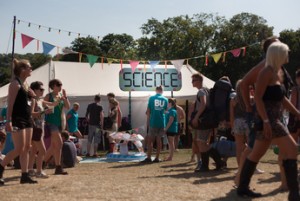
Pint of Science – Calling all Tech researchers and Health Researchers!
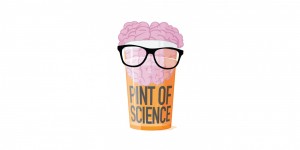 Share your research over a pint!
Share your research over a pint!
Pint of Science is hosting a series of events taking place across UK from the 15th-17th May in local pubs around Bournemouth. The Pint of Science festival aims to deliver interesting and relevant talks on the latest science research in an accessible format to the public – all in the comfort of pub!
We’re currently looking for speakers with Technology based research who would be interested in joining ‘Tech me out’ nights to deliver a talk on one of the 3 evenings – 15th ,16th , or 17th – The talks will be taking place in Chaplin’s in Boscombe.
We are also looking for health related speakers to take part in ‘Our body’ nights, also taking place over the 15th, 16th and 17th but this time in the Goat and Tricycle pub in the Triangle, Bournemouth
This is a great public engagement opportunity with an interesting crowd, enabling the opportunity for open discussion and questions with the wider public.
For more information or to get involved please contact Shanti Shanker sshanker@bournemouth.ac.uk or Joanna Pawlik (jpawlik@bournemouth.ac.uk
To find out more please visit Pint of Science website
Partners include British Heart Foundation, Elsevier and British Pharmacological Society. List of all partners
Need ideas for impact? New online magazine!
 Catch up on best practice, hints and tips for impact in the new Fasttrack Impact Magazine. You can read online or sign up to the mailing list.
Catch up on best practice, hints and tips for impact in the new Fasttrack Impact Magazine. You can read online or sign up to the mailing list.
If you need to talk about impact when developing your project, contact Genna West in KEIT or your Research Facilitator in the Funding Development Team.

So what?
 RKEO have hosted two funder visits in the past three weeks (Interreg and Medical Research Council). Both funders highlighted the ‘So what?’ principle in terms of research ideas, i.e. what is the consequence of your work; who can benefit from your work in the long-term and what can be done to increase the chances of the work reaching those beneficiaries. Even if your proposal doesn’t directly address economic or societal impact you should be able to explain the pathway that links your work to – using the example of MRC – improving human health.
RKEO have hosted two funder visits in the past three weeks (Interreg and Medical Research Council). Both funders highlighted the ‘So what?’ principle in terms of research ideas, i.e. what is the consequence of your work; who can benefit from your work in the long-term and what can be done to increase the chances of the work reaching those beneficiaries. Even if your proposal doesn’t directly address economic or societal impact you should be able to explain the pathway that links your work to – using the example of MRC – improving human health.
In order to describe the impact of your work, keep asking yourself ‘so what?’ or even better, describe your research idea to a colleague (or to take a step further, a member of the public) and get them to ask ‘so what’ at each point when you think you’ve finished explaining. RKEO had another funder visit today, the British Academy, and they used the phrase ‘Try not to be Gollum’, i.e. don’t be precious about your research and invite comments from others, share it and make it interesting.
Being able to fully explain the impact of your research will obviously increase your chances of being successful when applying for external research funds.
 There are a vast number of resources available on strengthening your research proposals and developing impact. Most funders will have guidance on impact, for example, section 2.2.5 of the MRC funder guide provides tips on articulating potential impact. They may also have impact reports; links to all of the research councils impact reports can be found in the BU research blog’s Research Funder Guide. BU has an online toolkit to help support the development of your research impact. The toolkit explores what impact is, how you can go about creating an impact strategy, and looks at some commonly used pathways to impact, as well as examples of outstanding impact case studies.
There are a vast number of resources available on strengthening your research proposals and developing impact. Most funders will have guidance on impact, for example, section 2.2.5 of the MRC funder guide provides tips on articulating potential impact. They may also have impact reports; links to all of the research councils impact reports can be found in the BU research blog’s Research Funder Guide. BU has an online toolkit to help support the development of your research impact. The toolkit explores what impact is, how you can go about creating an impact strategy, and looks at some commonly used pathways to impact, as well as examples of outstanding impact case studies.
For more information about impact, please contact the RKEO Knowledge Exchange and Impact Team or if you’re putting an application together and want advice on the impact sections, please contact the RKEO Funding Development Team.
Opportunity to develop partnerships with museums through the Museum University Partnerships Initiative (MUPI) from the NCCPE

The NCCPE are hosting a selection of fantastic opportunities for academics to build upon partnerships with museums across London, the South East and the South West. Take part in a MUPI Match event…It’s a chance for those who are keen to meet museums and other academics in the region and to network and develop new ideas! Each event is regional, attracting museums and universities from various areas; free to participate in; and interactive.
After receiving funding from the Arts Council England’s Museum Resilience Fund, the NCCPE have been developing an 18 month project to maximise the potential for museums and universities to work together to mutually beneficial aims. This project builds on a successful pilot project which was completed earlier this year.
The benefits: It is well proven that there are mutual benefits to museums and universities working together. Projects can cover a wide range of topics – from improving audience understanding to developing more effective collections knowledge or interpretation; from inspiring museum audiences with cutting edge research to developing new exhibits and exhibitions; the opportunities are endless.
The MUPI Match events are based on tried and tested methods of bringing people together to explore innovative and useful partnership working, stimulating new connections and new projects. Each event involves museum staff, volunteers, and academics working together to find mutually beneficial ideas that they would like to develop together. Participants can then bid for ‘thinking funding’ – to enable them to do desk research; have conversations; test ideas; and work together to plan their potential project. Teams will be supported to develop their partnership, and find effective ways to fund their project in the future.
The details: There will be 9 regional networking events (or ‘sandpits’) but information and booking forms for the sandpits in the southwest and London can be found here:
- London, 21 March 2017, Quayside Room, Museum of Docklands (details)
- South East Region, 28 March 2017, venue tbc (details) – rescheduled from 8 February
- South West, 3 May 2017, The New Room, Bristol (details)
There will also be two national networking events (one focused on designated collections) to broker partnerships between small and medium sized museums and HEIs:
- Partnerships, London, 7 June 2017
- Designated collections, Birmingham, 14 June 2017, Arts Council Offices, Birmingham
Contact: If you would like to find out more or register your interest in receiving regular updates about the project, including invitations to the sandpits and events, please contact Claire Wood (claire6.wood@uwe.ac.uk)
Additionally, if you’d like to discuss ideas for an event or need inspiration please contact Genna West, RKEO’s Engagement & Impact Facilitator (gwest@bournemouth.ac.uk)
For more information on the initiative please visit: https://www.publicengagement.ac.uk/work-with-us/current-projects/museum-university-partnerships-initiative
Public Engagement Opportunity at the Poole Maritime Festival!
It’s that time of year where The Festival of Learning is heading back on-tour and taking BU’s research out to some exciting locations. One of our stops this year includes the Poole Maritime Festival on Saturday 20th May.
Whatever stage you’re at in your research career, academic or PhD, we’re looking for participants to display and promote their research at the festival. This could be through table-top activities, posters, interactive displays – we’re open to ideas! It would be fantastic if your activities fitted into the theme of maritime heritage and environment but if your research isn’t directly related, we’d still love for you to get involved.
We’re expecting lots of interested members of the public with Poole Harbour Boat Show and the Seven Seas Festival forming part of Poole Maritime Festival’s exciting programme. The Boat Show alone attracted over 15,000 people in 2015! The Festival is linked with European Maritime Day, originally created in 2008 to give Europe’s community of maritime professionals a forum to meet, exchange knowledge and forge partnerships. It is a unique opportunity to promote Poole, local businesses and Bournemouth University’s research to an international audience!
If you’d like to get involved, need some idea inspiration or for any more information, drop me an email jpawlik@bournemouth.ac.uk. If you can’t get involved this year, still make sure that you head down to the Maritime Festival this year, taking place from the 15th-21st May.
Being Human Festival call for Participants 17–25 November 2017

Take part in the Being Human Festival 2017!
This year, the festival will return between 17-25 November with a new theme, ‘Lost and Found’. Applicants are invited to respond creatively and in ways that probe the rich intellectual possibilities of the theme. The festival is a celebration of the
Humanities, highlighting research in this area in fun, hands-on, immersive ways to
Demonstrate its relevance to our everyday lives.
There are a number of grants to support public engagement activities being offered.
These opportunities to run an event are for researchers at any career stage, background, disciplinary expertise or experience of delivering public engagement events.
For more information on the call and to apply for a “Small Award” or a “Hub Award”, please click here.
You can also find a number of case studies here that could prove useful if you’d like to apply!
Festival of Learning on-tour at RNLI College Food and Drink Festival: get involved!
Are you interested in getting to know the local community, and sharing your research and expertise with others? Do you have exciting research to talk about or would you like to gain some valuable experience in public engagement?
Join us in a lead up to Festival of Learning and be part of RNLI College Food and Drink Festival on 30th April! The festival is focused on great quality food, sourced and produced here in Dorset, and supports Mayday campaign, which is a nationwide community fundraising campaign.
There is a community theme to the Festival so we’re looking for activities that may be of interest to the local community or are around community based research. We’d also be keen to take along any food and drink related activities about. However, if your activity is not directly related then we’d still love to hear from you. Please drop me an email on jpawlik@bournemouth.ac.uk to express your interest in joining us and I will be able to provide you with more details.
We’re also looking for activities for Poole Maritime Festival and are looking forward to hearing from you! To find out more please click here.
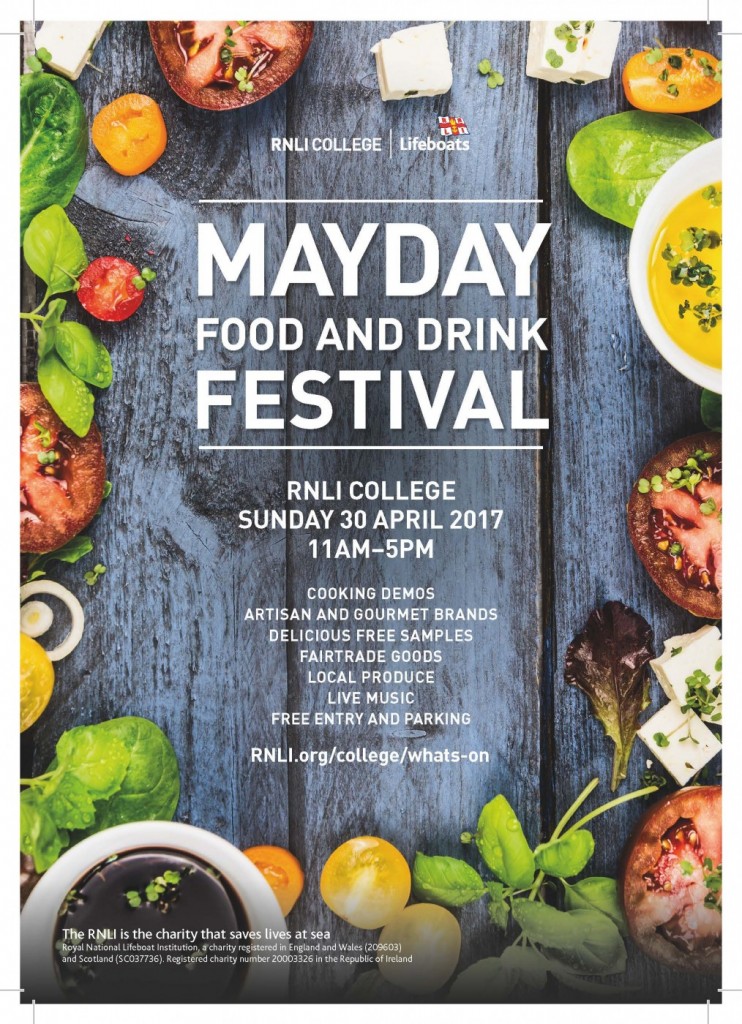











 We can help promote your public engagement event or activity
We can help promote your public engagement event or activity Funded Public Engagement Opportunity – ESRC Festival of Social Science 2024 -Deadline for Applications Thursday 16 May
Funded Public Engagement Opportunity – ESRC Festival of Social Science 2024 -Deadline for Applications Thursday 16 May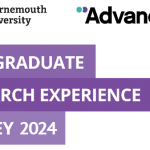 1 WEEK REMAINING- Postgraduate Research Experience Survey (PRES) 2024
1 WEEK REMAINING- Postgraduate Research Experience Survey (PRES) 2024 Conversation article: How 2-Tone brought new ideas about race and culture to young people beyond the inner cities
Conversation article: How 2-Tone brought new ideas about race and culture to young people beyond the inner cities MSCA Postdoctoral Fellowships 2024
MSCA Postdoctoral Fellowships 2024 Horizon Europe News – December 2023
Horizon Europe News – December 2023